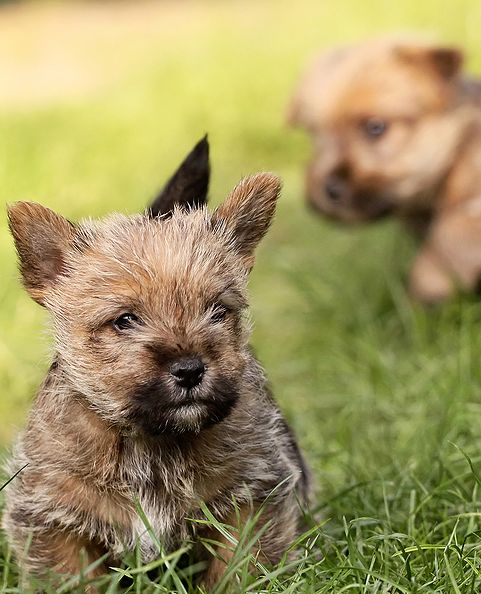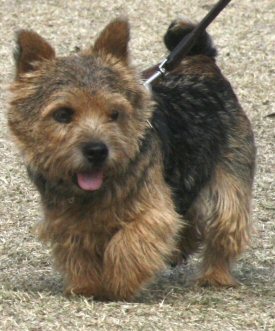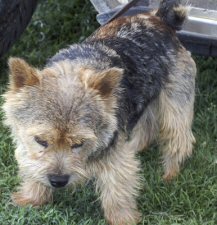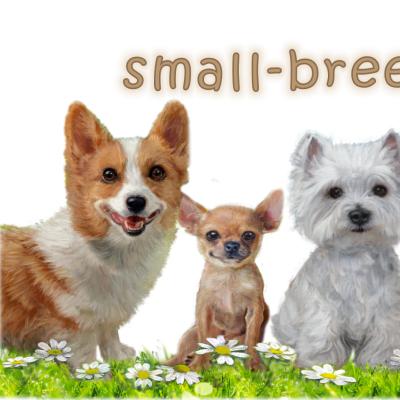PLEASE NOTE: Dog Garden Flags are currently unavailable. Please check back later. Thanks for your interest.
Norwich Terrier
Breed Information
Norwich Terrier: 101 Is the Norwich Terrier the right breed for your family? From breed information, health issues and where to purchase a puppy... You'll find it all right here.

|
|
Watch Dogs Norwich Terriers make good watch dogs! Like most small dogs, this little guy will think he's your own personal guardian against the mail man, ups man, the neighbor's cat, etc.!. |
|
|
Size- A Norwich Terrier stands about 10 inches tall at the shoulder and weighs about 12 pounds, give or take. But never let size matter when it comes to any small breed dog. Just like humans, not every dog will fit a cookie-cutter standard for the breed. |
Shedding-A Norwich Terrier would make a great dog for anyone who doesn't fancy vacuuming! In fact, this breed sheds as
minimally as most of the so-called "non-shedding" breeds. But be careful, Non shedding doesn't necessarily mean hypoallergenic.
Trainability- This breed loves to please it's owner and has an attention span large enough to make him extremely trainable, but only the most positive training methods should be practiced with this breed. Click here to learn how easy it is to train your Norwich Terrier to sit, shake, play dead and more!
People Friendly- Norwiches love, love, love 'their' people and are generally friendly with most people. This breed isn't known to be shy and even enjoys the company of children, but watch them closely around any small child to ensure that the dog is being held properly and isn't showing any signs of fear or aggression.
Incidentally, Norwich Terriers also make great dogs for seniors. Check out some of the other best dogs for seniors and learn the health benefits having a pet can do for everyone.
More Facts and Fun Stuff About Norwich Terriers!

There could very well be Norwich Terrier rescue group near you.
This breed is not common in shelters, but there are rescue groups dedicated to serving the very best interest of this breed.
If you plan to purchase a Norwich Terrier puppy, please learn how to avoid puppy mill dogs by reading our FAQ page... We also explain, in detail, how to go about adopting a Norwich Terrier, even when the rescue groups don't have a compatible dog for you.
Separation anxiety is common- Separation anxiety, to some degree, is a common trait with this breed. Destructive chewing, loud continuous barking or "accidents" on your carpet or furniture are a few of the possible symptoms. Crating a dog for long hours every day is not a solution. Check out our page on separation anxiety to learn what you can do to end these destructive behaviors.
housebreaking Difficulties Consistency in training is a must and the earlier you start, the better. Smaller dogs come with smaller bladders and it may take a while before this breed is able to hold his bladder for very long. We highly recommend the positive and proven training techniques outlined on our dog training page.
Not a recommended in homes with smaller animals This is not going to be 100% true with every dog in every case, but Norwich Terriers were bred to hunt and inherent instincts are not easily unlearned. Be careful bringing this dog into a house with rabbits, kittens, ferrets or any other animals that could be considered prey to these little hunters.
Adopting an adult dog is GREAT way to ensure that you get all the breed characteristics you desire.
Adult dogs come with several bonuses! Such bonuses Include: Already out of chewing phase, More likely to be housebroken and his temperament will already be established. Best of all, you will forever be his hero! Click here to learn even more reasons why adopting an adult dog is the smartest choice.
Norwich Terrier Health Issues
Upper Airway Syndrome- Stenoic nares, soft palate and collapsing tracheas are just a few of the problems that could affect the upper airway of this breed.
Hip Dysplasia is a developmental subluxation of the hip joints which can eventually lead to arthritis and/or lameness. It's causes are genetic as well as environmental. A secondary concern of this affliction is osteoarthritis.
Patellar Luxation-A joint condition in which kneecaps dislocate. This is very painful for your dog and expensive to correct. This is a common complication among many small breed dogs.
The use of pet steps has been shown to significantly reduce the wear and tear on joints.

Still unsure which breed is the right dog for you?
If you're looking to share your home with a dog and you've got a soft
spot for an animal in need, check into volunteering at a rescue... or
better yet, become a foster parent for a dog in need of a temporary
home. There are countless dogs in immediate need of someone like you who cares.
We hope you've found this page helpful in your search for your next best friend.
Learn more about me, my art, the mission of this site and Rescue Dogs Are Better here.
We also welcome you to contact us if there are any other questions we can answer for you about anything you saw or read on this site.


New! Comments
Leave us a comment if you have something you'd like to share or add to what you just read here. Or contact us with questions or comments.